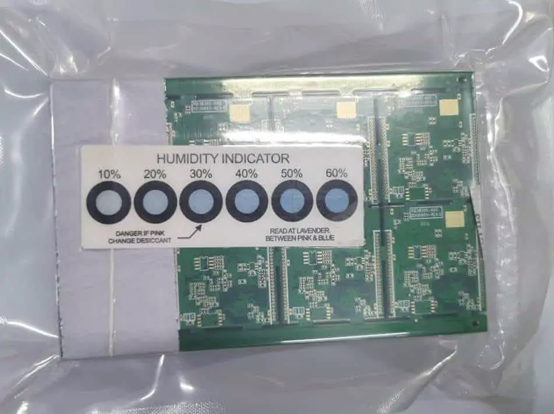Moisture-sensitive devices, the delicate hearts of modern electronics, are vulnerable to the insidious threat of humidity. Semiconductors, printed circuit boards (PCBs), and surface-mount LED devices can suffer corrosion, delamination, and electrical degradation when exposed to excessive moisture. To combat this, moisture barrier packaging is indispensable, but their efficacy hinges on stringent testing.
Moisture-sensitive devices are often hygroscopic, readily absorb ambient moisture. During reflow soldering, this absorbed moisture can vaporize explosively, leading to "popcorning" – a catastrophic failure where the device's package bursts. Even without such dramatic failures, moisture can cause subtle but equally damaging corrosion and electrical degradation.
Moisture barrier packaging acts as a crucial barrier, creating a low-humidity environment for storing and transporting moisture-sensitive devices. Constructed from multiple laminated layers, including aluminum foil and polymer films, these bags are designed to minimize moisture vapor transmission. However, their effectiveness is not guaranteed; it must be verified through rigorous testing.
To ensure Moisture barrier packaging meets the demanding requirements of moisture-sensitive devices protection, a battery of tests is conducted:
- Moisture Vapor Transmission Rate (MVTR):
- This paramount test, often performed according to ASTM F1249, quantifies the amount of moisture that permeates the bag's material over time. A low MVTR is critical, indicating superior moisture protection.
- Puncture Resistance:
- Handling and shipping can expose bags to sharp objects. Tests measure the bag's ability to withstand punctures, safeguarding against breaches in the moisture barrier.
- Seal Strength:
- The integrity of heat seals is paramount. Tests evaluate the strength of these seals, ensuring they can withstand stress without failing and allowing moisture to enter.
- Integrity Testing:
- Pinholes and other defects can compromise the bag's barrier. Leak tests, such as submerging the bag in water, are employed to identify any leaks.
Labthink C390H Water Vapor Transmission Rate Test System is designed and manufactured based on infrared sensor method and conforms to the requirements of ISO 15106-2 and ASTM F1249. This instrument can be used to measure the water vapor transmission rate of barrier materials with high, and medium moisture barrier properties with a wide testing range and high testing efficiency. The instrument is featured with patented design of integrated block consisting of 3 test cells. Equipped with high precision sensors and professional computer-controlled system, the instrument can regulate and control the temperature, humidity and flow rate precisely, which guarantee the testing sensitivity and repeatability of test results. C390H is applicable to determination of water vapor permeability of plastic films, sheeting, paper, packages and other relative packaging materials in food, pharmaceutical, medical apparatus, consumer goods, photovoltaic and electronic industries, etc.
ISO 15106-2, ASTM F1249, GB/T 26253, JIS K7129
Parameters
| Parameter | Model C390H | |
|---|---|---|
| Testing Efficiency | g/(m2·day) (Standard) | 0.005 ~ 40 |
| g/(m2·day) (Optional) | 0.005 ~ 100 | |
| g/(100in2·day) | 0.0003 ~ 2.6 | |
| g/(pkg·day) (Package) | 0.000025 ~ 0.2 | |
| Resolution | g/(m2·day) | 0.0001 |
| Repeatability | g/(m2·day) | 0.005 or 2% |
| Test Temperature | °C | 10 ~ 55 ±0.2 |
| Test Humidity | RH | 5% ~ 90% ±1%, 100% |
| Additional Functions | Package Test (3L Max.) | Optional |
| DataShieldTM Note2 | Optional | |
| Computer System required by GMP | Optional | |
| CFR21 Part11 | Optional | |
By subjecting the moisture barrier packaging to rigorous testing and adhering to best practices, manufacturers and users can ensure the dry deliverance of moisture-sensitive devices, safeguarding their integrity and reliability. In the intricate world of electronics, where even a trace of moisture can be catastrophic, these tests are not mere formalities; they are the guardians of quality.

Comments
Post a Comment